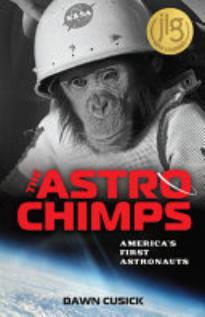Animal experimentation
1 Reviews
(2)
4-6
Chimpanzees were "America's first astronauts," but what did their missions entail, and how did their voyages help NASA send humans into space? Cusick's well-researched look at the primates' training and flights provides details for an area of the space race typically relegated to a footnote. The account covers the rigorous and extensive training that dozens of chimps underwent to prepare for the Mercury program, introducing individual animals along with their dedicated human trainers and veterinarians (and touching on the ethics of animal testing). Cusick zeroes in on the high-stress and difficult flights of two astrochimps: Ham, whose suborbital flight preceded Alan Shepard's historic one, and Enos, whose two orbits around Earth paved the way for John Glenn. The propulsively page-turning narrative accessibly explains scientific details while showcasing the vital importance of the chimp program to NASA's moonshot goal. We learn that the chimps were not merely passengers but instead highly skilled astronauts performing difficult mental challenges throughout their flights to give scientists evidence that brains could function normally in zero-gravity situations as well as during the intense pressures of ascent and descent. Back matter that includes extensive endnotes, a glossary, an index, and additional resources rounds out this compelling aspect of astronautic history.
Reviewer: Eric Carpenter
| Horn Book Magazine Issue:
May, 2024
1 reviews
We are currently offering this content for free. Sign up now to activate your personal profile, where you can save articles for future viewing.




